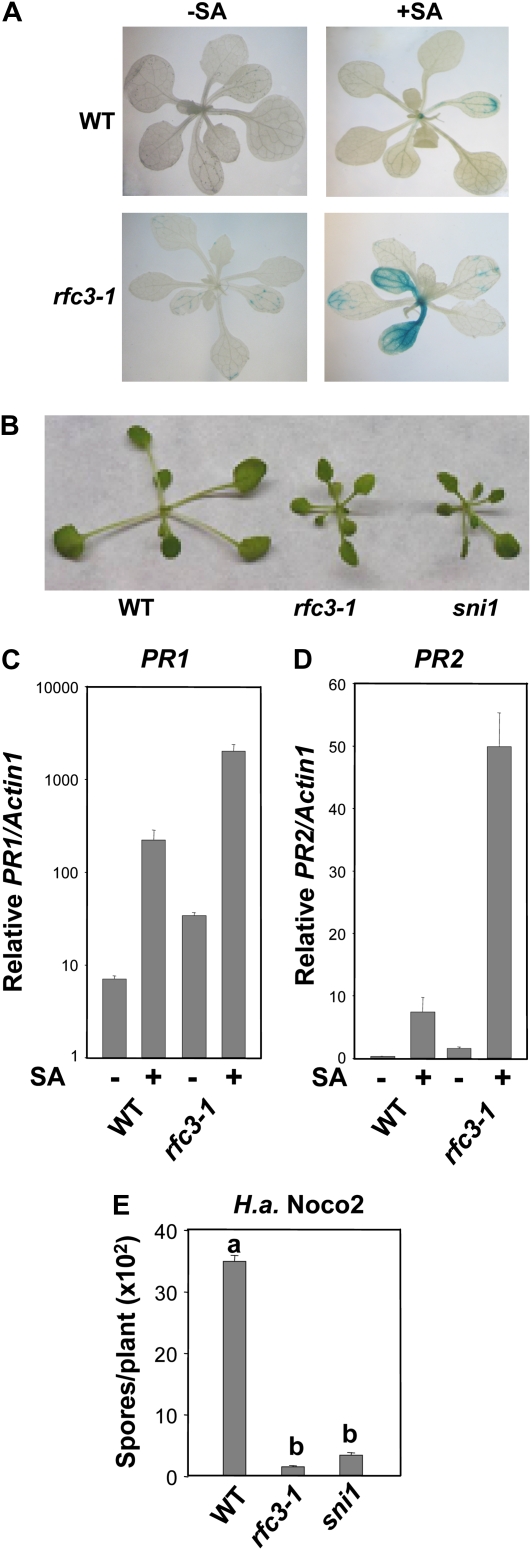Figure 1.
Characterization of the rfc3-1 mutant. A, GUS staining of wild-type (WT) Col and rfc3-1 plants, both with the pBGL2-GUS reporter gene. Two-week-old seedlings grown on MS with or without 10 μm SA were stained for GUS activity as described previously (Bowling et al., 1994). B, Morphology of wild-type, rfc3-1, and sni1 plants. All plants were grown on soil and photographed when they were 4 weeks old. C and D, Relative PR1 (C) and PR2 (D) expression in wild-type and rfc3-1 plants. Two-week-old seedlings grown on MS with or without 50 μm SA were collected for RNA extraction and reverse transcribed to obtain total cDNA. The cDNA samples were normalized by real-time PCR with Actin1 (multiplied by 1,000 for clarity). Shown are means of three replicates ± sd. The PR1 expression of rfc3-1 is significantly higher than that of the Col wild type, with or without SA treatment (P < 0.01, t test). The expression level of PR2 in rfc3-1 with 50 μm SA is significantly higher than that of the wild type under the same conditions (P < 0.01), but there is no significant difference in PR2 expression between wild-type and rfc3-1 plants without SA induction (P > 0.05). The experiment was repeated once with similar results. E, Growth of H. a. Noco2 on wild-type, rfc3-1, and sni1 plants. Two-week-old seedlings were sprayed with H. a. Noco2 at a concentration of 5,000 spores mL−1 water. The infection was scored 7 d after inoculation. The values presented are averages of four replicates ± sd. Statistical differences among the samples are labeled with different letters (P < 0.01, ANOVA). The experiment was repeated three times with similar results.

